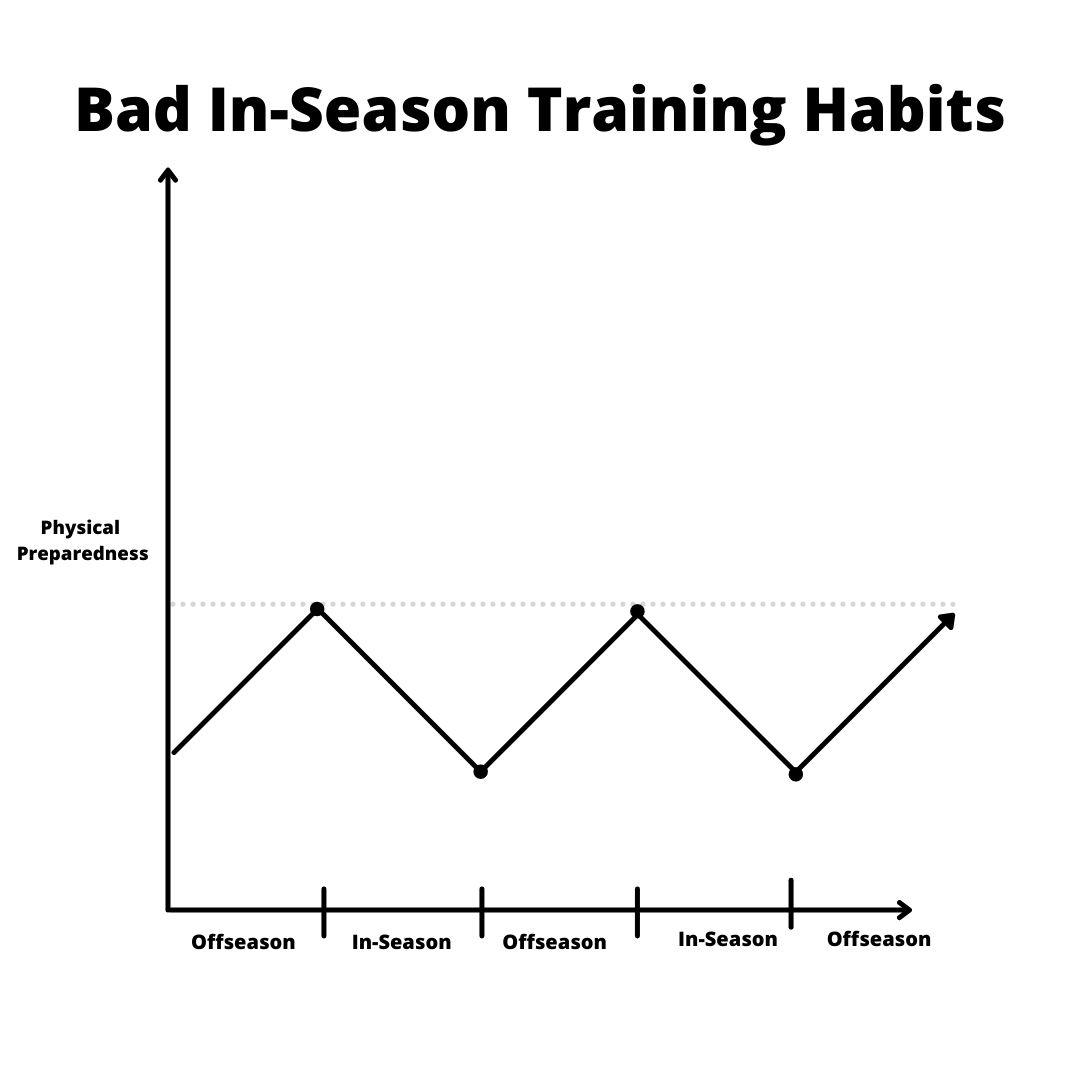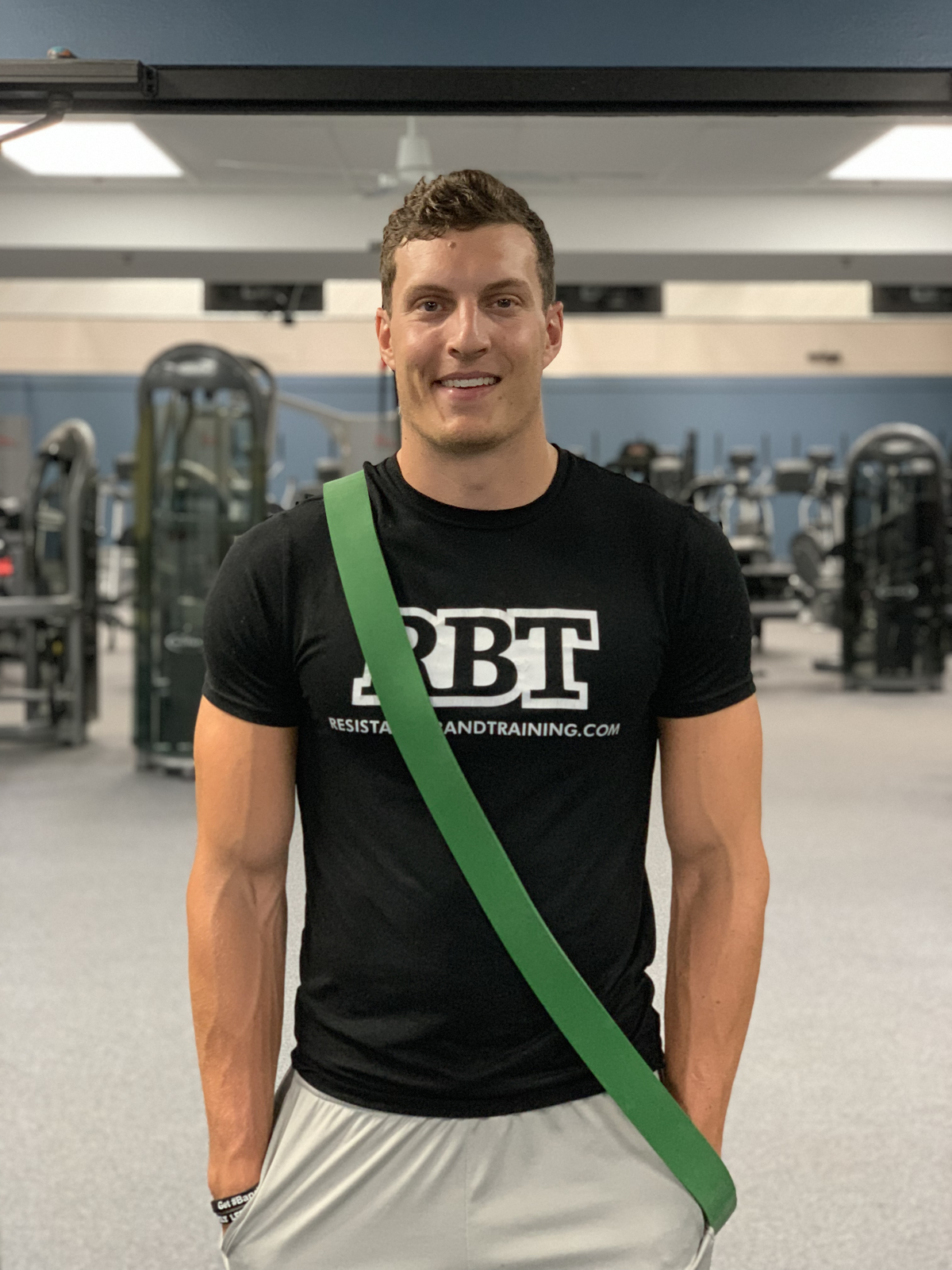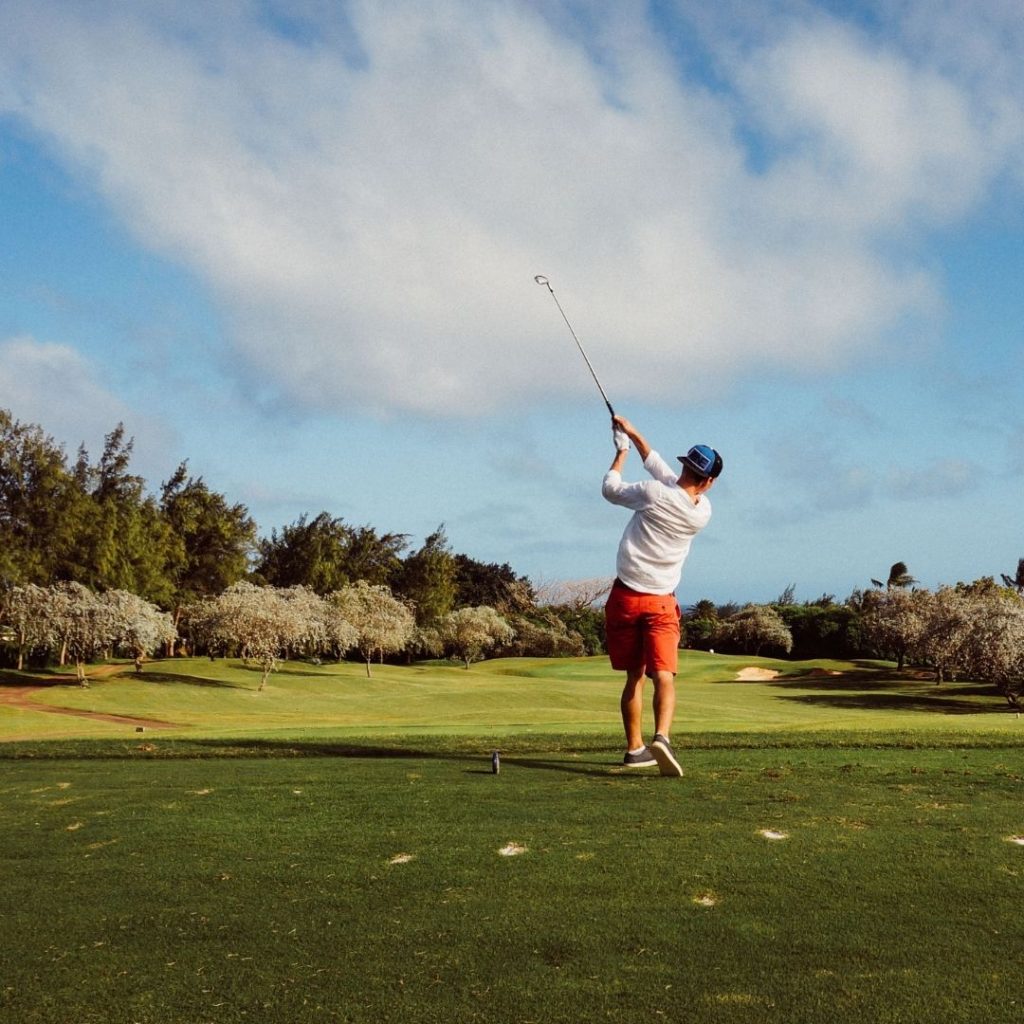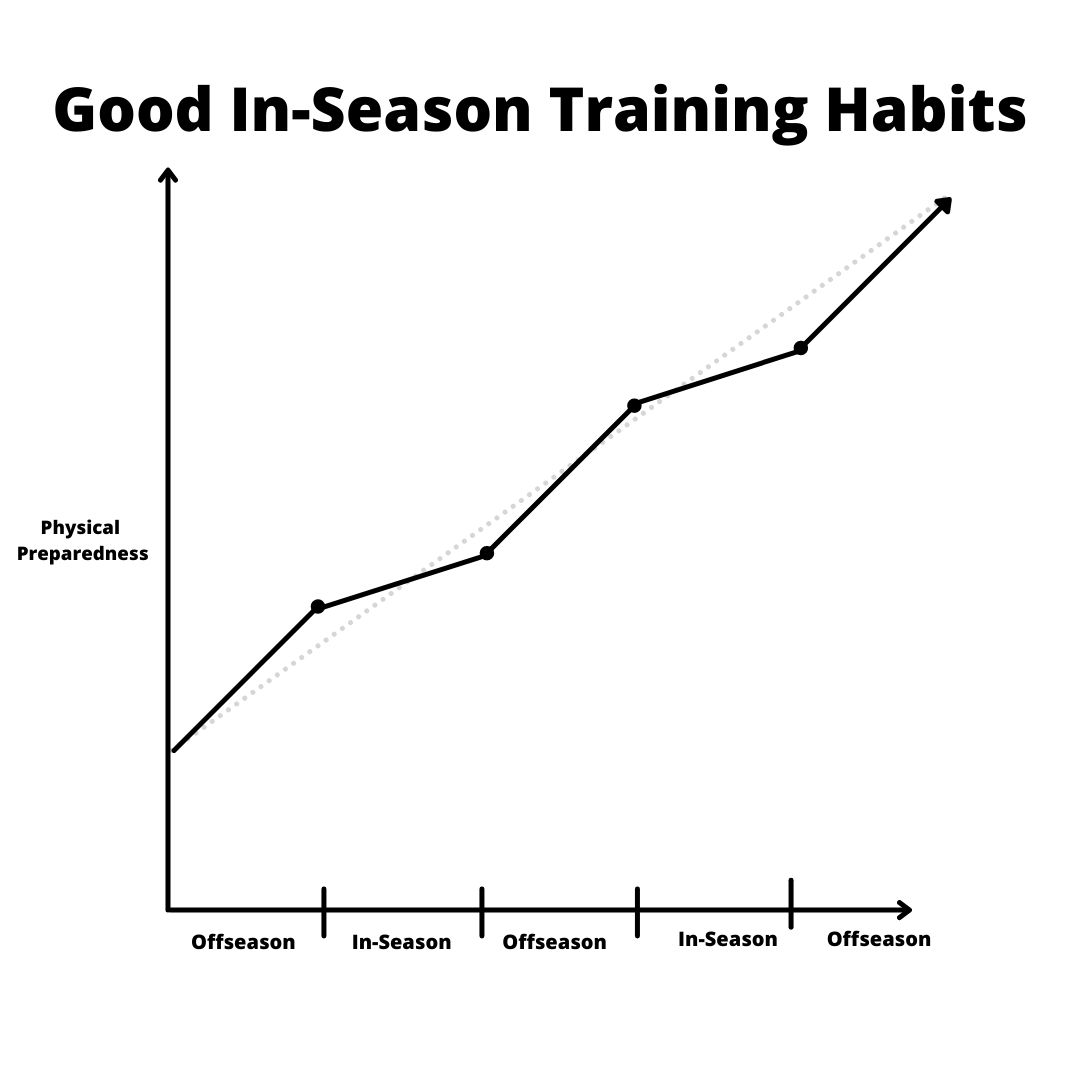Finally! The time has come, golf season is in full swing. If you are a fellow Midwesterner, then I am sure you can echo my happiness.
With the season officially upon us, it’s crucial that our training adapts to mold to our new lifestyle as well as continues pushing us towards our goals. It needs to complement our higher volumes of playing time, never leaving us feeling too fatigued or ill prepared for a round of golf.
Because, let’s be real, a large reason I (we) train is to be able to play high level golf. When the time has come, I want to be ready, not waiting for my body to recover from a workout.
Now is the time, and here are 5 keys to training in-season that are going to allow you to not only play great rounds of golf, but continually push you closer to your long-term goals.
1.) More Than Maintenance
This is the first, and most important idea that we need to comprehend as a golfing community.
In-season golf training is more than simply “maintaining” all of the work you did in the off-season.
We all have long-term goals, some golf related, some life related.
If you don’t, I recommend you come up with some and write them down! Feel free to share them with me if you would like. We are much more likely to follow through with goals when we tell others about them.
At the base, I would guess many of our golf related goals are somewhere along the lines of:
- Play better
- Play healthier
- Play longer
Being the case, we can’t simply go through this annual cycle of build up for the season, tear down during the season, repeat.
 Instead, we need to use the season to further progress our physical preparedness and overall physical abilities. While our training should adjust, and may attack our goals in different ways, ways that better complement the higher volume of golf we will be playing, the long term development goals remain the same.
Instead, we need to use the season to further progress our physical preparedness and overall physical abilities. While our training should adjust, and may attack our goals in different ways, ways that better complement the higher volume of golf we will be playing, the long term development goals remain the same.
- Play better
- Play healthier
- Play longer
Instead, our year-over-year programming should resemble as below:
Maintenance is reserved for fragile, non-adaptable things, like cars, buildings, and appliances, not humans.
You can and should seek progression during in-season golf training.
If you are maintaining, you are leaving progress on the table.
2.) Limit Training Stress
Now, at first glance this second key may seem opposite of the first one, however, let me explain.
I want us to think of stress as a reserve system, meaning that we have a certain amount of stress within us that we can draw upon before creating burn out or negative effects. Drawing out some of this stress on a daily basis is a good thing, we need this for growth. But pulling too much from our stress reserve will be negative and could halt growth, or worse, reverse it.
Further, we have to remember that stress is a multifaceted ideal, meaning it comes in many forms. Mental stress, emotional stress, physical stress, cognitive stress, etc…. And golf probably hits all of these and more, depending on the day.
More golf in-season means more stress being pulled from our reserve.
Therefore, the question as a sports performance coach then becomes, how do we limit stress but still produce adaptation and growth?
First, and probably easiest, let’s make the workouts shorter and decrease volume (See key #3). A ton of work and adaptation can be created in 3, 30 minute workouts per week.
Secondly, let’s remove some of the more impactful exercises like jumping, running, rotating, etc. (See key #4).
Thirdly, let’s complete exercises and movements that athletes are very comfortable with. By doing so, we eliminate the additional stress of motor learning, which can be subconsciously dramatic.
When completing a new movement our nervous system has to work over time not only to direct the actions of our muscles, trying to coordinate movement, but also in attempting to store the new exercise in our movement banks, ready to go for next time. If we can eliminate this neuromotor stress by completing movements that we are very familiar with, we will be able to limit the stress being pulled from our reserve, but still tap into growth and create adaptations.
Lastly, be aware of other external stressors outside of golf and be able to gauge when stress is too high, and, oppositely, when you can afford to pull more from your reserve.
Did you recently get into a fight with a loved one?
Did you recently get married?
Did you recently get a new boss whose first impression was unpleasant?
Did you recently get a job promotion?
Both positive and negative events in our lives trigger stress responses and will pull from our reserve. Therefore, be aware and attuned to your body. If too stressed, there is no point in adding the additional stress of training and instead go for a walk, do a 10 minute yoga session, or do something to promote recovery.
Health always underlies performance, but more on this in key #5!
3.) Shorter isn’t always worse
As I mentioned earlier, a lot of work can get done in 3, 30 minute workouts each week. Over a 5 month season, that would mean 1,800 minutes of training that you would have missed if you decided to not train in-season (and you would fall onto that first graph above titled, “Bad In-Season Training Habits”)
A shorter workout will pull less stress out of our reserve and leave us with more to devote towards actually playing the game of golf, which is the end goal!
However, don’t be fooled, shorter does not mean a “worse” workout. It doesn’t mean a less productive or effective one either. It simply means we need to transfer our focus. Instead of creating adaptations through volume, we are now shifting to create different adaptations through intent and quality of our movement. We are blossoming adaptations through shorter bursts of intensity, and not longer exposures to volume.
While progressing health and performance throughout the course of a season DOES require continually increasing or altering the stress being applied via training, shorter and higher intensity based workouts can be an awesome tool during the season to minimize volume stress, but maximize intent and efficiency of the stresses being created.
4.) Prioritize: Strength, Stability/Anti-Rotation, Mobility. Microdose: Power and Rotation.
If you have been following me for any amount of time, you are aware of the 5 physical traits of a holistic golf athlete:
- Strength
- Power
- Mobility
- Stability / Anti-Rotation
- Rotation
While we should never, not train any of these qualities, when it comes to in-season training, we should be prioritizing those that complement our golf swings best, leaving us a healthy, robust, and adaptable movement system.
The golf swing requires all 5 of these characteristics, but specifically, the golf swing is power and rotation based.
Let’s say you are playing 4 times a week for 2 hours each time. That’s a total of 8 hours of powerful rotation based movement being created by your movement system. Therefore, in our training let’s shift our focus to the other keys in order to further push us towards our goals of holistic, long-term physical development.
Priority should be placed on strength, stability / anti-rotation, and mobility as these are seen to lesser degrees in the golf swing.
What do I mean by microdosing power and rotation?
Microdose means to apply a very small amount of something in order to see adaptation, while minimizing any negative side effects of that same thing. Therefore, when I say microdose power and rotation, understand that we should continually include these in our training throughout the season. Trust me, I, more than anybody, will push you to include more rotational work in your training. However, when it comes to in-season training, we rotate a ton when we play, therefore let’s minimize the volume of rotation we are completing in training and instead complement our golf with stability and anti-rotation exercises.
Same goes for power. The golf swing is powerful, and completing movements at the velocity that it calls for can be impactful on joints. Therefore, we need to pair this impact with a different stimulus in training like slower strength work or isometric stabilization work to continually create a holistic movement system.
The goal is to push us closer to our goals of long-term physical development. The best way to do so is to balance these 5 keys throughout the duration of your training year in a way that promotes continuous growth and adaptation.
5.) Establish Holistic Health Habits
Last but not least, it is crucial that we work to establish and progress our overall holistic health habits. This includes, but not limited to:
- Nutrition
- Hydration
- Sleep and Recovery
- Emotional health
- Attitude
- Physical activity
As discussed above, with the golf season comes increased stress being pulled from our reserve via volume of playing. Because of this, we should be minimizing stress elsewhere and maximizing our recovery and holistic health habits.
Getting better sleep won’t just make you feel better and give you a better attitude, it will boost recovery from one round to the next.
Improving nutrition won’t just help you recover faster, but it will supply you with proper energy to limit fatigue throughout your next round.
Having a better attitude and maintaining higher degrees of happiness won’t just help you play better and enjoy the game, but it has shown to decrease blood pressure, increase heart health, and improve immune system function.
Your game relies on your underlying health levels. There is no better time to improve your underlying health habits than in-season, because it is when your game relies on them most!
Wrap Up
Training in-season isn’t simply a time for “maintenance” or worse, regression. It is a time to continue progressing our physical development in a way that complements our golf game and volume of playing. There are ways to continue progressing, and yet still leave plenty in the tank for our next round or range session.
Don’t pick one or the other.
Choose both to truly maximize your current health and performance, as well as your future health and performance.
Here is a glimpse at what my current in-season training schedule looks like…
My Current In-Season Training Schedule
Monday:
- 45 Minute Total Body Strength Workout (Lower Body Emphasis)
- 15 Minute Mobility/Stability Session
- 30 Minute Short Game Practice
Tuesday
- Active Recovery
- 15 Minute Primer Workout
- 1 Hour Range Session
- 30 Minute Short Game Practice
Wednesday
- 45 Minute Total Body Strength (Upper Body Emphasis)
- 15 Minute Mobility/Stability Session
Thursday
- 15 Minute Primer Workout
- 1 Hour Range Session
- 30 Minute Short Game Practice
Friday
- 30 Minute High Intensity Workout
- 30 Minute Short Game Practice or Range Session
- 9 / 18 Holes
Saturday
- Active Recovery
- 15 Minute Mobility/Stability Session
- 9 /18 Holes
Sunday
- 15 Minute Primer Workout
- 9 / 18 Holes
Let’s go low!
About Carter Schmitz

I graduated from the University of St. Thomas in 2019 with a business degree and a minor in exercise science. While there, I played football (as long as we consider being a kicker, playing football) and found two of the deepest passions in life - learning and human performance. Since then, I have become a certified strength coach, TPI Specialist and have had the opportunity to train hundreds of athletes ranging from the middle school to the professional level.
I believe in building humans first, athletes second.
I believe that everybody has extraordinarily high amounts of value to offer.
I believe that the pursuit of improvement will lead to growth, no matter the outcomes.
With my writing, I strive to break down and apply complex ideas in order to boost understanding, draw comparisons from seemingly separated and opposing topics, and empower growth in my readers. Knowledge and understanding are power, and they create the foundation of improvement. Moving forward, I plan on continuing to seek the betterment of my athletes, myself and my community, empowering growth along the way.
Be sure to check out my Instagram and YouTube channel for more content:
Instagram - https://www.instagram.com/coach_carter_schmitz/
YouTube - https://www.youtube.com/channel/UCQ7DxYHKGuZIykzVIaxp3XQ

